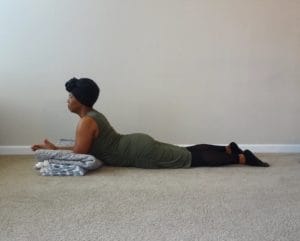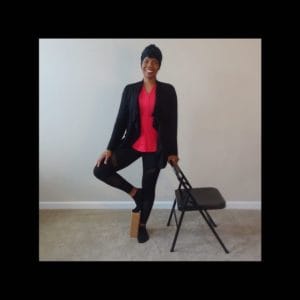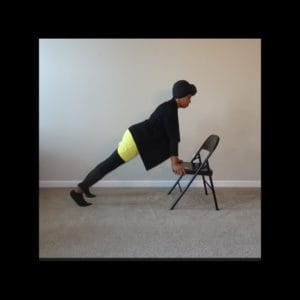“Grab your blocks and strap!” I loved hearing those words as I walked into my favorite yoga class. Besides being conveniently timed and located, it was such a mood – complete with low rhythmic edm, minimal lighting, and a bunch of dedicated yogis. Many of us were new to the practice, so our instructor spent a lot of time on setting-up for foundational poses.
On that particular day, we learned how to improve chaturanga since a lot of us were “dipping” at the hips or nearly face planting into the mat. Our instructor guided us to place blocks at the highest setting, shoulder’s width apart and a few inches down from the top edge of the mat. Coming from downward dog, we were guided to aim the front of our shoulders for the top edges of the blocks, allowing the shoulders to rest there – committing the corrected posture to muscle memory.
 Correcting postures is just one of the ways to use yoga props in your practice. They also help to “deepen” a pose by supporting that extra stretch, or stabilizing you, allowing for a further reach. When asked about using blocks in yoga practice MVP’s Michelle Young said, “I use them when I’m doing half splits, pyramid pose, triangle and half moon. I also really love to sit up on blocks.” A block underneath you after savasana raises the hips, allowing the knees to sink further to the ground, releasing some of the tension from the lower body. Michelle goes on to explain, “I always have two blocks at the top of the mat so that they are handy when I need them. I recommend that all beginners (or anyone really) keep two blocks at the top of the mat for accessibility.”
Correcting postures is just one of the ways to use yoga props in your practice. They also help to “deepen” a pose by supporting that extra stretch, or stabilizing you, allowing for a further reach. When asked about using blocks in yoga practice MVP’s Michelle Young said, “I use them when I’m doing half splits, pyramid pose, triangle and half moon. I also really love to sit up on blocks.” A block underneath you after savasana raises the hips, allowing the knees to sink further to the ground, releasing some of the tension from the lower body. Michelle goes on to explain, “I always have two blocks at the top of the mat so that they are handy when I need them. I recommend that all beginners (or anyone really) keep two blocks at the top of the mat for accessibility.”
And access is key! Desi Johnson, Peer Support for MVP says, “I use props to make the poses more accessible to me. I have carpal tunnel and tendinitis which kept me out of weight bearing postures for a couple of months. Downward dog, plank, and knees-chest-chin were unavailable to me so I decided to buy a chair to continue to do these postures. Props can even support us through postures that would otherwise be out of reach. Desi continues, “A great achievement for me is getting into bhujapidasana (shoulder pressing) with my chair and blocks. Without props weight bearing postures would be impossible for me.” As far as other props, Desi shares, “I also use a strap for shoulder mobility exercises, dancer pose, king pigeon, and cow face pose.”
Here is a brief rundown of the most popular props and how to use them.
Yoga Blocks – can be made from foam, wood, cork and more. Mostly used to stabilize the body and “bring the floor to you.” Grab them when you want to lift your hips higher in a seated position or when you want to stretch the back and shoulders in reclined positions.
Yoga Straps – help us to stretch the body and widen our range of motion. Commonly used in bending postures to gently ease our limbs into position.
Bolsters – help us relax into postures. They are softer than blocks and ideal for elevated reclining poses or support in any posture where necessary.
Yoga blankets – are a multipurpose tool. They can be rolled up and used as a bolster, folded to support the knees and elbows, and draped over the body for warmth in savasana.
Yoga wheels – massage the back, help to release tension, and aid in bending postures. They are also an excellent balance challenge!
Many of these props have been used to modify poses for MVP Instagram challenges, like October’s #findblancemvp! This 14 day challenge encourages participants to work towards balance on and off the mat. What is your favorite prop to use?



